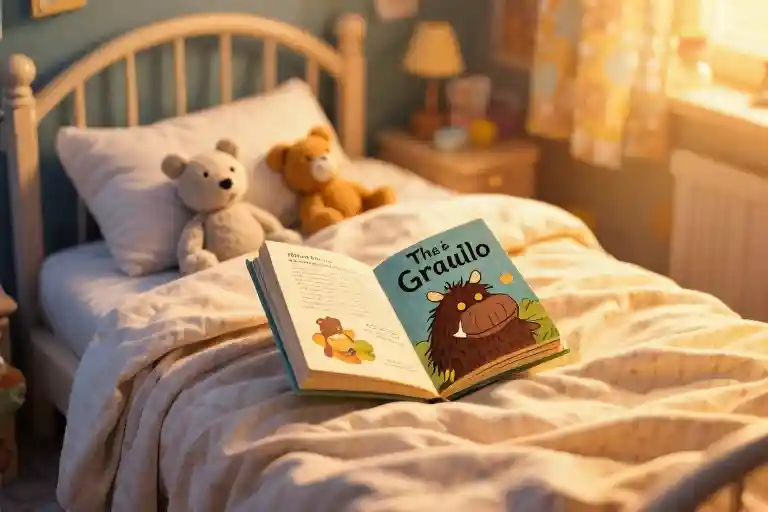The smiling face handing out cupcakes at your child’s birthday party. The enthusiastic coach who stays late to help your daughter perfect her soccer kick. The beloved uncle who never forgets a Christmas present. These aren’t the shadowy figures we’ve been trained to watch for – they’re the people we welcome into our homes and hearts. Yet statistically, they represent the most likely threat to our children’s safety.
With over a decade of experience as a trauma-informed coach and victim advocate, specializing in psychology and social behavior, I’ve witnessed firsthand how child sexual predators operate. My professional background in behavioral science combined with my personal journey as a survivor has given me unique insight into how we can better protect our kids. The uncomfortable truth? Traditional “stranger danger” education isn’t just ineffective – it’s dangerously misleading.
Research shows that 93% of child sexual abuse victims know their abuser. These aren’t mysterious figures in trench coats; they’re often the most trusted adults in a child’s life. Predators don’t typically use force – they use friendship. They don’t snatch children from playgrounds; they’re invited into living rooms. This fundamental misunderstanding of how grooming behavior actually works leaves our children vulnerable to the most common forms of abuse.
The real danger lies in the gradual erosion of boundaries, the slow normalization of inappropriate behavior masked as affection or special attention. A predator might start by offering private tutoring sessions or “secret” gifts that create isolation from other adults. They test boundaries with seemingly innocent touches that escalate over time. By the time physical contact occurs, the child often feels complicit or trapped by shame and confusion.
What makes these grooming signs particularly difficult to detect is how closely they mimic genuine care. That’s why we need to shift our focus from teaching kids to identify “bad people” (an abstract concept even adults struggle with) to recognizing specific inappropriate behaviors. Instead of vague warnings, we need concrete strategies that empower children with bodily autonomy and critical thinking skills.
Consider this: When we tell children to avoid strangers, we’re giving them a rule that applies to less than 7% of actual abuse cases. Meanwhile, we’re not equipping them to handle the far more likely scenario of inappropriate behavior from someone they know and trust. This isn’t about making children paranoid – it’s about giving them the tools to navigate complex social situations with confidence and awareness.
The solution begins with understanding how predators manipulate children’s natural desire to please adults. Common grooming tactics include:
- Creating special relationships that make the child feel chosen
- Gradually introducing secrecy (“This is just our little secret”)
- Testing boundaries with non-sexual touch before escalating
- Using guilt or shame to ensure compliance (“You’ll get in trouble if you tell”)
As parents and educators, our job isn’t to scare children but to prepare them. In the following sections, we’ll explore practical strategies for teaching kids about body autonomy, recognizing manipulation, and creating family environments where children feel safe speaking up. Because true protection doesn’t come from fear – it comes from knowledge, empowerment, and open communication.
Why We’ve Been Teaching It Wrong: Three Hard Truths About Familiar Predators
For generations, parents have drilled one primary safety lesson into children’s minds: “Don’t talk to strangers.” While well-intentioned, this outdated approach creates dangerous blind spots in child sexual abuse prevention. The uncomfortable reality? 93% of juvenile sexual abuse victims know their perpetrator, according to the U.S. Department of Justice. These aren’t shadowy figures in alleyways—they’re often the smiling faces we welcome into our homes and trust with our children’s care.
The Trusted Threat: Predators Who Earn Community Respect
The most effective predators don’t fit criminal stereotypes. They’re:
- The devoted coach who stays late to help your child improve
- The charismatic uncle who always brings the best birthday gifts
- The attentive teacher who volunteers for extra tutoring sessions
These individuals strategically build social capital. As one convicted offender confessed in treatment: “I made sure mothers saw me as the guy who’d fix their leaky sink, not the guy they’d suspect.” Their community standing becomes psychological armor, making children’s disclosures less credible.
The Gradual Grooming Process: How Abuse Starts Without Violence
Child sexual abuse typically follows a predictable grooming pattern:
- Targeting: Selecting a vulnerable child (often one craving attention)
- Isolation: Creating opportunities for one-on-one interaction
- Desensitization: Gradually crossing physical boundaries (e.g., “accidental” touches)
- Psychological Manipulation: Using phrases like “This is our special secret”
This slow erosion of boundaries explains why many children can’t articulate when “nice” behavior turned inappropriate. As trauma specialist Dr. Rebecca Bailey notes: “By the time a child feels something’s wrong, the predator has already rewired their sense of normal.”
Rewriting the Safety Script: From Fear to Empowerment
Instead of teaching stranger danger, focus on these evidence-based strategies:
- Body autonomy education: Teach children proper names for private parts by age 3
- Scenario practice: Role-play responses to suspicious requests (“Can you help me find my lost puppy?”)
- Trusted network: Create a visual “safety circle” chart showing 3-5 always-believed adults
Remember: Predators don’t win through force—they exploit silence. As we’ll explore next, recognizing their psychological playbook is our most powerful prevention tool.
The Trap Behind the Smile: 6 Common Grooming Tactics
Most parents envision predators as shadowy figures in alleyways. The unsettling truth? They’re more likely to be the cheerful soccer coach giving high-fives or the beloved uncle who always brings special gifts. Through my work as a trauma-informed coach and countless survivor accounts, I’ve identified six recurring manipulation patterns that parents often miss until it’s too late.
1. The Language of Emotional Blackmail
Predators frequently use emotionally charged phrases that confuse a child’s natural instincts:
- “You don’t want to get your teacher in trouble, do you?” (guilt-tripping)
- “This is our special secret—sharing it would hurt my feelings” (false intimacy)
- “I know you’re mature enough to handle this” (flattery)
Real-world example: A 9-year-old client recounted how her piano teacher said, “Your mom works so hard—we shouldn’t bother her with small things,” before progressing to inappropriate touching.
2. Gradual Boundary Testing
Grooming rarely begins with overt abuse. It follows a predictable escalation pattern:
- Non-threatening touch: Arm around shoulders during team photos
- Isolation: Offering private “extra help” sessions
- Normalization: Casual references to bodies (“You’re growing so tall!”)
- Secret-keeping: “Don’t tell about our little chats”
- Guilt reinforcement: “After all I’ve done for you…”
- Threats: Often implied rather than stated
Interactive checkpoint: Think of three adults your child interacts with regularly. Can you identify which stage each relationship occupies?
3. The Gift Gambit
Groomers often weaponize generosity:
- Special treats “just for you”
- Privileges other kids don’t get (front seat in carpool)
- Technology gifts (phones, games) with private communication channels
Safety strategy: Establish family rules like “No gifts stay secret—even from Grandma.”
4. Role Confusion
Abusers deliberately blur relationship boundaries:
- A coach acting like a peer (“Call me Mike, not Coach”)
- Religious leaders claiming “God wants us close”
- Teachers sharing inappropriate personal problems
Red flag: Any adult who says, “You understand me better than the other adults.”
5. The Loyalty Trap
This insidious tactic preys on children’s desire to please:
- “Real friends keep promises” (after inappropriate requests)
- “Your parents just don’t understand our bond”
- Creating “us vs. them” dynamics
Empowerment phrase: Teach children, “Grown-ups should never ask you to keep secrets from your safe adults.”
6. Digital Grooming Gateways
With 58% of teens meeting online friends in person (Pew Research), predators exploit:
- Gaming chat functions
- Social media “finsta” accounts
- Shared document platforms (Google Docs as grooming tools)
Tech safety tip: Regularly review devices together—not as surveillance, but saying, “Let’s see what cool things you’re doing online!”
Spot the Signs: Interactive Scenario Test
Which of these should trigger concern?
A) A tutor gives your child candy after each session
B) A cousin wants “just us” camping trips
C) A teacher emails your child directly about assignments
D) All of the above
(Answer: While individually explainable, patterns of special treatment + isolation = D)
Breaking the Cycle
Predators rely on children’s confusion between “nice” and “safe.” This week, try:
- Naming the tactics: Age-appropriate examples (“Sometimes people give gifts to trick kids”)
- Practicing responses: Role-play saying, “I need to check with my parent”
- Creating report routes: Identify 3 trusted adults beyond parents
Remember: Knowledge without action is like a smoke detector with dead batteries. These strategies only protect when put into regular practice.
Age-Appropriate Empowerment Strategies
Protecting children from sexual abuse requires different approaches at various developmental stages. What works for a preschooler won’t resonate with a preteen. This chapter provides concrete, age-specific strategies to build body autonomy and safety skills without creating fear.
Preschoolers (3-6 years): Body Awareness Through Play
At this stage, we’re laying foundations through playful learning. The goal isn’t to teach stranger danger, but to normalize conversations about body safety.
1. Proper Anatomy Names Game
- Use correct terms (penis, vulva) during bath time
- Make it casual: “Time to wash your vulva! Just like we wash your elbows”
- Avoid cutesy nicknames that imply shame
2. The Underwear Rule
- Simple concept: “What’s covered by underwear is private”
- Use dolls to demonstrate: “Can we show Teddy’s private parts? No!”
- Reinforce: “Only doctors with parents present can touch there”
3. Red Light/Green Light Touches
- Green: Hugs from mom (when child agrees)
- Yellow: Doctor’s stethoscope (necessary but explain first)
- Red: Any touch that feels confusing/scary
- Practice with stuffed animals: “Is this green or red light?”
4. The Surprise vs. Secret Distinction
- Secrets: “Never keep these about bodies”
- Surprises: “Temporary (like birthday gifts)”
- Role-play: “If someone says ‘don’t tell mom,’ what do you say?” (Answer: “I tell everything!”)
Elementary School (7-12 years): Scenario Practice
Children now understand more complex situations. Focus on recognizing grooming behavior and assertive responses.
1. The ‘What If’ Game
- Create scenarios during car rides:
- “What if coach offers a ride home alone?”
- “What if auntie says ‘don’t tell your parents’?”
- Praise all answers, then guide: “Great thinking! Also, you could…”
2. Permission-Based Affection
- Never force hugs/contact, even with relatives
- Teach script: “I prefer high-fives today”
- Model consent: “Can I fix your collar?” before touching
3. Trusted Adult Identification
- Have child name 3-5 “safety helpers” (not just parents)
- Practice: “Which helper would you call if…?”
- Update list quarterly as relationships change
4. Digital Safety Foundations
- Establish tech rules early:
- “No private chats with adults”
- “Show me any message that makes you uncomfortable”
- Use parental controls openly: “These help me protect you”
Teenagers (13+): Digital Boundaries & Critical Thinking
Focus shifts to online risks, romantic relationships, and peer pressure situations.
1. Sexting Prevention Talks
- Avoid scare tactics; discuss permanence:
- “Even Snapchats can be screenshot”
- “Once sent, you lose control”
- Role-play pressure scenarios:
- “If someone says ‘prove you love me’…”
2. Healthy Relationship Red Flags
- Discuss subtle grooming in dating:
- Excessive jealousy disguised as care
- Isolation from friends/family
- Pressuring sexual activities
- Share real (anonymous) stories from teen survivors
3. The Exit Strategy Plan
- Create code words for uncomfortable situations:
- Text “X” = Need pickup immediately
- “Mom, I forgot to feed the dog” = Leave now
- Practice using them in low-stakes scenarios first
4. Continued Body Autonomy
- Reinforce that:
- Consent can be withdrawn anytime
- Being intoxicated invalidates consent
- They’re never responsible for others’ actions
Implementation Tips for All Ages
- Frequency: Brief, frequent conversations > one big talk
- Timing: Link to natural moments (baths, TV scenes)
- Tone: Calm and matter-of-fact, not fearful
- Open-Door Policy: “No topic is off-limits”
- Modeling: Demonstrate bodily autonomy in your own life
Remember: These aren’t one-time lessons but ongoing dialogues. Start simple, build gradually, and always bring it back to their inherent right to safety and respect.
Building the Ultimate Silence-Breaking System: A Family Safety Framework
Creating a home environment where children feel empowered to speak up requires more than occasional conversations—it demands intentional systems. These three research-backed strategies transform abstract safety concepts into daily practices that predators can’t penetrate.
The “Safety Circle” Method: Visualizing Trust Boundaries
Children struggle with abstract concepts like “only some adults can be trusted.” The Safety Circle makes it tangible:
- Create a visual chart together using concentric circles:
- Inner circle (3-5 people): Those allowed to help with private care (bathing, toileting)
- Middle circle: Trusted adults for hugs/high-fives
- Outer circle: Friendly acquaintances (wave or verbal greetings only)
- Use concrete examples: “Dr. Smith is in your middle circle—she can check your sore throat but shouldn’t touch your swimsuit area.”
- Review monthly: Add/remove people as relationships evolve (e.g., a coach leaving the team)
Pro Tip: Laminate the chart and let your child decorate it—ownership increases engagement.
Secret Alarm Words: The Covert Safety Net
Predators often use “secrets” as weapons. Counter with your own coded language:
- Emergency words: Establish phrases like:
- “Is Grandma’s puppy okay?” = “I feel unsafe but can’t say why”
- “I want pineapple pizza” = “Come get me immediately”
- Practice scenarios: Role-play using these during pretend playdates or car rides
- Digital variants: For older kids, create emoji combinations (🦄🌧️ = “This person makes me uncomfortable”)
Real Story: An 8-year-old used her family’s code word “blue kangaroo” during a sleepover, prompting her parents to discover the host uncle’s inappropriate behavior.
Weekly Safety Check-Ins: Keeping Dialogue Flowing
Replace sporadic “big talks” with consistent 10-minute meetings:
Structure:
- Rose & Thorn: Share one positive (rose) and one concerning (thorn) interaction from the week
- Scenario Game: “What would you do if…” (rotate age-appropriate situations)
- Policy Updates: Adjust house rules as needed (e.g., new social media apps)
Sample Questions:
- “Did anyone ask you to keep a secret this week?”
- “Has anyone given you gifts without telling us?”
- “Do you ever feel worried about being alone with [family friend/coach]?”
Key Insight: These meetings normalize safety discussions, making disclosures less daunting when real issues arise.
Turning Knowledge Into Daily Practice
These systems work because they:
- Demystify trust: Clear boundaries replace vague warnings
- Equalize power: Children have concrete tools to assert boundaries
- Detect early: Patterns emerge through regular check-ins
Start small—introduce one system this week. Remember, predators target isolated children. By weaving these practices into your family rhythm, you’re building defenses no groomer can easily breach.
Empowering Families: Your Action Plan Starts Here
We’ve journeyed through difficult truths together – how predators operate, why traditional warnings fail, and what truly keeps children safe. Now, let’s transform knowledge into tangible protection with resources you can use immediately.
Printable Safety Conversation Starters
For Younger Children (3-7 years):
During bath time:
“Which parts of your body feel happy when we rub lotion here? Are there spots that want to stay private?” (Teaches body awareness without fear)
For School-Age Kids (8-12 years):
“If someone you like gives you a gift and says ‘don’t tell Mom,’ what would you do?” (Practices secret-breaking skills)
For Teens:
“When someone says ‘you’re mature for your age,’ what might they really want?” (Develops manipulation radar)
These prompts normalize safety talks while building critical thinking – download the full-color version [here] with 15 more age-appropriate scripts.
Trusted Resources at Your Fingertips
- 24/7 Crisis Support: National Sexual Assault Hotline: 1-800-656-HOPE (4673)
- Online Reporting: RAINN’s anonymous chat system (rainn.org)
- Local Advocacy: [Your State] Coalition Against Sexual Assault provides free family counseling
The Hopeful Truth: Prevention Works
Research from the National Center for Missing & Exploited Children shows that when children:
✅ Know proper body part names (reduces vulnerability by 38%)
✅ Have practiced saying “no” to adults (decreases grooming success by 67%)
✅ Believe they won’t get in trouble for reporting (increases disclosure rates by 83%)
…90% of attempted abuse can be prevented or interrupted early. That’s not just statistics – that’s classrooms full of children who grew up unharmed because their parents had these exact conversations.
You’re now part of this protective network. Keep this guide handy, revisit the strategies monthly, and remember: The greatest weapon against darkness isn’t fear – it’s preparation, awareness, and the courage to keep talking.
For ongoing support, join our free “Safety Circle” newsletter where we share:
- Monthly age-specific conversation guides
- Predator tactic updates (they evolve too)
- Healing resources for survivor-parents





